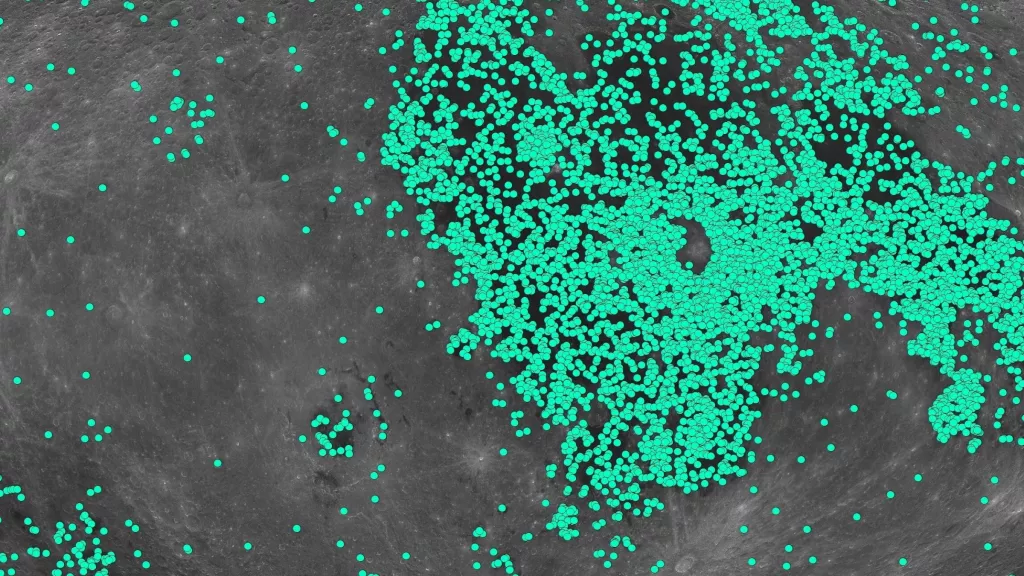
The moon has many more craters than we thought, a new study finds.
More than 109,000 new craters were discovered in the low- and mid-latitudes of the moon using artificial intelligence (AI) fed by data collected by Chinese lunar orbiters.
The number of recorded craters on the lunar surface is now more than a dozen times greater than before. The findings were published Dec. 22 in the journal Nature Communications.
“It is the largest lunar crater database with automatic extraction for the middle and low latitudes of the moon,” lead author Chen Yang, an associate professor of earth sciences at Jilin University in China, told Live Science in an email.
Related: China on the moon! A history of Chinese lunar missions in pictures
Impact craters, formed during meteor strikes, cover most of the lunar surface.
Impact craters can be thought of as the lunar equivalent of “fossils,” which “record the history of the solar system,” said Yang.
Yet these “fossils” can vary dramatically in size and shape, overlap and erode over time. This makes identifying and dating them extremely difficult and time consuming. The process is also subjective, leading to inconsistencies between existing databases.
Yang and her team addressed these issues with machine learning. They trained a deep neural network (where a computer uses layers of mathematical calculations feeding each other) with data from thousands of previously identified craters and learned the algorithm to find new ones. The network was then applied to data collected by the Chang’e-1 and Chang’e-2 lunar orbits, revealing 109,956 additional craters on the lunar surface.





A significant number of the craters identified in this study are classified as ‘small’ to ‘medium’, although they are still quite large from an Earthling’s perspective, ranging from 0.6 miles to 60 miles (1 to 100 kilometers) in diameter. The relatively small size of the craters is probably the reason why they have not been detected before.
But the AI program also discovered much larger, irregularly shaped craters that had eroded – some of them up to 550 km in diameter.
The algorithm also estimated when nearly 19,000 of the craters formed based on their characteristics, such as size and depth, and by assigning each to a geologic time period. These craters covered all five of the Moon’s geologic lunar periods, with some going back about 4 billion years.

The team hopes to improve their crater-spotting algorithm by feeding it data from the recently launched Chang’e 5 lander, which recently returned lunar samples to Earth.
The researchers also want to adapt their machine learning approach and apply it to other bodies in the solar system, including planets such as Mars.
“This prediction generally takes minutes, followed by a few hours of post-processing on standard computer hardware,” the researchers wrote in the study.
Originally published on Live Science.